Stabilized vs. Unstabilized Chlorine: Essential Differences in Pool Care
February 02th, 2024
February 02th, 2024
Swimming pools sparkle in the sun, promising refreshing escapes from the summer heat, but maintaining that crystalline allure requires more than just a net and some elbow grease. It's about finding the right balance of chemistry. Among the essential players in this balancing act are stabilized and unstabilized chlorine, two substances that sound similar but solve different puzzles in pool maintenance.
Think back to a time when you may have noticed the pungent smell of chlorine at a local swimming pool or perhaps in your own backyard oasis. That unmistakable scent is a clue to the powerful role chlorine plays in keeping water clear and safe. However, not all chlorine is created equal. Stabilized and unstabilized chlorine serve distinct functions, each bringing their own advantages and challenges.
Stabilized chlorine, often referred to as 'pool-grade', contains cyanuric acid. This component acts as a sunscreen for chlorine, preventing it from being eaten up by the sun’s ultraviolet rays. On the other hand, unstabilized chlorine, which is free of cyanuric acid, works efficiently in environments shielded from direct sunlight or when rapid sanitization is necessary.
Understanding the difference between these two types of chlorine can be the key to ensuring your pool remains an inviting haven. By choosing the right type, you not only maintain clarity and safety but also optimize your pool's chemical efficiency, making your summer swims stress-free and enjoyable.
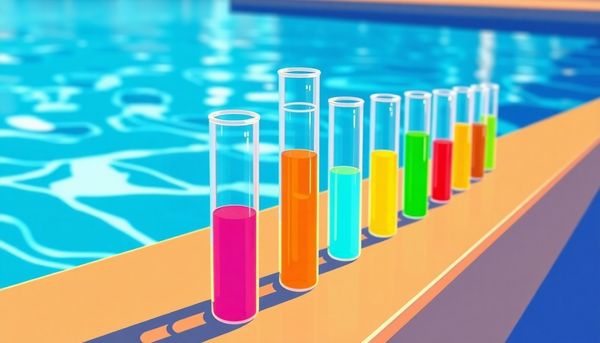
Selecting the right chlorine for your pool is akin to choosing the perfect spice for your favorite dish. Both stabilized and unstabilized chlorine have their merits, but your setting and usage can make one a better fit than the other. For instance, if your pool basks under the sun for most of the day, stabilized chlorine is your ally. Its secret weapon, cyanuric acid, acts like sunscreen for the chlorine, ensuring it doesn't vanish under the sun's relentless gaze. This means fewer trips to the store and less maintenance hassle.
Conversely, if your pool resides indoors or if you engage in frequent water activities that require shocking the pool often, unstabilized chlorine stands out. It lacks cyanuric acid, allowing you to customize stabilization based on specific needs. You can add cyanuric acid separately and control the concentration meticulously, keeping it below 100 ppm to optimize efficacy.
Every pool tells a story, and understanding yours helps in making an informed choice. In my experience, after switching to stabilized chlorine, my outdoor pool maintenance became a breeze, saving both time and money. Yet, friends with covered pools swear by the flexibility of unstabilized chlorine. Consider your pool's personality—outdoor sunbather or indoor paradisiac retreat—and let that guide your decision. In the end, the right choice will keep your waters sparkling, ready for any splash or swim.
Navigating the world of pool maintenance can feel like stepping into a chemist's lab, especially when you encounter terms like "stabilized" and "unstabilized" chlorine. These two variants may seem nearly identical, yet the distinction between them significantly impacts your pool's clarity and cleanliness. At the heart of stabilized chlorine is cyanuric acid, a guardian that protects chlorine from the sun's UV rays, ensuring it remains effective longer. This type is ideal for outdoor pools, as it reduces the frequency of adding chlorine, offering a more relaxed maintenance schedule.
On the flip side, unstabilized chlorine stands out for its swift action, sans any cyanuric acid. This makes it perfect for indoor pools or those times when you need to shock the pool quickly. Without the stabilizer, this chlorine type dissipates rapidly under the sun, necessitating more frequent applications. However, it provides the benefit of flexibility; if you ever find the need for stabilization, you can simply add cyanuric acid separately, tailoring your pool's chemistry to your liking.
Understanding these differences can feel a bit like learning a new language, but it’s essential for effective pool care. Whether your pool basks in the sun or lounges indoors, the choice between stabilized and unstabilized chlorine ultimately hinges on your specific needs and maintenance style. This knowledge not only ensures a sparkling oasis but also simplifies your pool-keeping routine.
Balancing chlorine levels in your pool is much like keeping a recipe just right; a little too much or too little can change everything. For my first pool, I quickly learned that maintaining the ideal chlorine level—around 3 parts per million (ppm)—was key to ensuring a sparkling, inviting swim. Whether you opt for stabilized or unstabilized chlorine, monitoring these levels ensures your water remains hygienic and safe.
Stabilized chlorine, with its trusty companion cyanuric acid, extends the chlorine's lifespan, offering robust protection against UV rays. This means less frequent additions and a more predictable maintenance schedule. However, even the helpful cyanuric acid can turn against you if it accumulates excessively, weakening chlorine's effectiveness. A sudden spike in levels might demand a partial water replacement—a lesson I learned the hard way during a scorching summer.
Conversely, unstabilized chlorine, free from cyanuric acid, provides flexibility. It acts swiftly, making it a strong candidate for indoor pools or after heavy contamination. Yet, its fast-acting nature means regular checks and frequent dosing, especially in outdoor pools. For those who love the sun, this can translate into a bit more poolside labor.
Ultimately, the trick lies in understanding your pool’s unique personality. Gauge your environment and usage patterns to determine which chlorine type best suits your routine. By maintaining optimal chlorine levels, you ensure not just a clean pool, but a refreshing escape right in your backyard.
In the realm of pool care, the choice between stabilized and unstabilized chlorine is akin to deciding between a long-lasting romance and a brief summer fling. Stabilized chlorine, infused with cyanuric acid, is like a faithful partner, enduring the blazing sun to keep your pool pristine for longer stretches. Its resistance to the sun's ultraviolet rays means fewer trips to the store and more time enjoying your pool. Picture a hot summer day: with stabilized chlorine, your water remains clear and inviting, and your maintenance routine feels like a breeze.
On the other hand, unstabilized chlorine plays the role of an ephemeral, albeit effective, companion. It lacks the protective embrace of cyanuric acid, making it more susceptible to UV degradation. For certain situations, such as indoor pools or scenarios where quick, powerful sanitation is required, this fleeting nature can be advantageous. Personally, I’ve found unstabilized chlorine to be a handy tool for pool shock treatments when the water needs a swift, robust cleanse.
While stabilized chlorine offers convenience, it carries the caveat of cyanuric acid buildup, which can impede chlorine’s efficacy if left unchecked. Regular testing and potential water dilution become part of the equation. Ultimately, the decision hinges on your pool’s specific needs and environment. Will you opt for the steady reliability of stabilized chlorine, or embrace the potent yet temporary power of its unstabilized counterpart? Both paths keep your pool swimmable; the choice is yours.
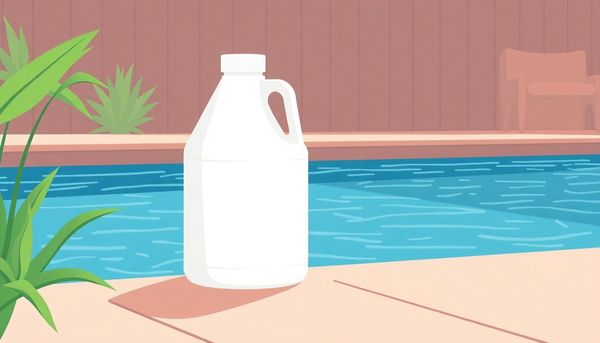
Navigating the world of pool chemicals, especially for a fresh pool owner, often feels like deciphering an entirely new language. Among the essentials sits chlorine, the unsung hero of pristine swimming waters. But the path forks here: stabilized or unstabilized? This choice, while seemingly trivial, holds the key to maintaining your pool’s clarity.
Stabilized chlorine, enhanced with cyanuric acid, stands as a steadfast guardian against the sun's relentless UV rays. Picture it as sunscreen for your pool water, prolonging chlorine’s effectiveness and reducing how often you need to replenish it. This makes it ideal for outdoor pools basking under the sun's full gaze. However, moderation is crucial; excessive cyanuric acid can turn this boon into a bane, impeding chlorine’s sanitizing prowess.
On the other hand, unstabilized chlorine operates unadorned, without the protective embrace of cyanuric acid. This variant suits indoor pools or scenarios demanding frequent doses, such as shock treatments. Without the stabilizer, chlorine dissipates quicker, necessitating more frequent applications to maintain optimal levels. It offers flexibility, allowing pool owners to add stabilizer as needed, fine-tuning the balance for their specific environment.
Choosing between these two isn't about right or wrong, but rather tailoring your decision to your pool's unique needs. Whether your backyard oasis seeks stability under the sun or flexibility for indoor maintenance, understanding these differences empowers you to keep your waters shimmering and inviting.
Navigating the world of pool chemicals can feel like deciphering a new language, especially when faced with the dilemma of choosing between stabilized and unstabilized chlorine. The decision, while seemingly minor, can significantly influence the ease and cost of pool maintenance. If your pool takes center stage under the blazing sun, stabilized chlorine might become your best ally. Thanks to its cyanuric acid content, this type of chlorine resists the sun’s UV rays, allowing it to remain effective for longer periods. This means fewer trips to the store for refills and more time enjoying the cool waters.
Conversely, if your pool resides indoors or you find yourself frequently needing to shock the pool, unstabilized chlorine could serve you better. Without cyanuric acid, unstabilized chlorine dissipates quickly, making it ideal for situations where you need immediate, powerful sanitation. This rapid action can be particularly useful after heavy usage or inclement weather, when a quick clean is essential.
Balancing these considerations involves more than chemistry; it reflects how you use your pool. For those who relish in weekend barbecues by the outdoor pool, stabilized options offer consistency and convenience. Meanwhile, if your pool is a private retreat or an indoor feature, the flexibility of unstabilized chlorine might align more closely with your needs. Whatever your choice, understanding these nuances ensures a sparkling sanctuary tailored to your lifestyle.
Chlorine is the unsung hero of pool maintenance, tirelessly working to keep your swimming oasis clean and safe. To get the most out of this valiant defender, it's key to understand how to maximize its efficiency. Stabilized chlorine, with its cyanuric acid ally, becomes a long-lasting guard against contaminants, especially in sun-drenched outdoor pools. By protecting it from UV rays, you reduce the frequency of dosing and enjoy consistent sanitization. However, remember to monitor cyanuric acid levels carefully; too much can curtail chlorine's effectiveness, making dilution necessary to restore balance.
Now, unstabilized chlorine may seem like the underdog, but it shines in its own right. Perfect for indoor pools or for those moments when a quick, powerful shock is needed, this type of chlorine doesn’t carry the baggage of stabilizers. This means it works swiftly and effectively when immediate action is required. It's a go-to for pool owners who want control over every aspect of their pool chemistry without the potential buildup of stabilizers.
Every pool is unique, like its owner. Whether you're blessed with a backyard suntrap or oversee a cozy indoor retreat, the choice between stabilized and unstabilized chlorine should reflect the specific characteristics of your pool environment. By tailoring your chlorine strategy to your particular needs, you ensure that every swim is as refreshing and worry-free as possible.
Navigating the world of pool maintenance can feel like entering a mysterious realm, especially when it comes to deciding between stabilized and unstabilized chlorine. Yet, the choice extends beyond just picking one over the other. Among the most critical considerations is guarding against the overstabilization of chlorine, a sneaky issue that can turn your pool care routine upside down.
When cyanuric acid—the stabilizing agent—gets too cozy in your pool water, it can start interfering with chlorine's ability to sanitize effectively. Think of it as having a friend who becomes too helpful, to the point where they inadvertently hinder your efforts. High levels of cyanuric acid, often above 100 ppm, can lead to what's known as "chlorine lock," where your chlorine is present but rendered impotent against algae and bacteria.
This scenario played out in my friend’s backyard oasis. His crystal-clear pool gradually turned murky despite regular maintenance. It wasn't until he tested for cyanuric acid levels that the problem became apparent. The solution involved a partial water drain and refill, a task both time-consuming and frustrating.
To prevent such headaches, routinely test your pool's cyanuric acid levels and aim for the sweet spot between 30-50 ppm. This balance ensures that your chlorine works efficiently, providing a safe and inviting swimming environment without the stress of overstabilization. By maintaining this equilibrium, you can enjoy a worry-free pool season, knowing your chlorine is doing its job without hindrance.

Navigating the world of pool maintenance can feel akin to unraveling a mystery, especially when it comes to making the most of your chlorine. Whether you lean towards stabilized or unstabilized options, maximizing the effectiveness of chlorine is more than just a matter of choice—it's about understanding how to balance your pool's chemistry for optimal results.
First, consider the sun's relentless impact on unstabilized chlorine. With its quick evaporation under UV rays, it demands more frequent dosing. For outdoor pools where the sun rules, employing a bit of strategy can save you time and effort. Adding cyanuric acid separately, for instance, offers a flexible approach, allowing you to control and adjust levels as needed without the risk of over-stabilization.
On the flip side, stabilized chlorine thrives under sunny conditions but requires careful monitoring of cyanuric acid levels. Too much can indeed render your chlorine less potent. A friend of mine, faced with this challenge, found herself frequently testing her pool water, ultimately avoiding the headache of dilution by sticking to a balanced routine.
In both cases, regular testing is your best ally. Monitoring chlorine levels ensures you maintain the right balance, keeping your pool pristine without unnecessary expense. Remember, whether it's a sun-drenched afternoon or a shaded retreat, understanding your pool's unique environment and needs will help you harness the full power of chlorine, keeping your oasis ready for a dive anytime.
Navigating the world of pool maintenance often feels like a chemistry class, especially when it comes to understanding the types of chlorine available. Chlorine, the unsung hero of pool hygiene, comes in two primary forms: stabilized and unstabilized. Each type plays a unique role in keeping your pool sparkling clean, yet they differ significantly in their properties and applications.
Stabilized chlorine, often found in the form of tablets or granules, contains cyanuric acid. This acid acts as a shield, protecting the chlorine from the sun’s harsh UV rays and extending its lifespan in your pool. Imagine hosting a summer barbecue; stabilized chlorine allows you to enjoy the party without constantly worrying about chlorine levels, as it maintains its effectiveness longer. However, too much cyanuric acid can be problematic, as it may reduce chlorine’s sanitizing prowess, necessitating periodic dilution of your pool water.
Unstabilized chlorine, on the other hand, is the purist form, absent of cyanuric acid. It works swiftly and is ideal for indoor pools or quick fixes. Picture the sudden need to shock your pool after a storm—unstabilized chlorine is your go-to, delivering immediate results. Yet, it requires frequent monitoring and replenishment, especially under the blazing sun, to maintain optimal sanitation levels.
Choosing between these two types hinges on your pool’s setting and your maintenance routine. For outdoor pools with regular exposure to sunlight, stabilized chlorine is a practical choice. Conversely, if you’re managing an indoor pool or prefer a more hands-on approach, unstabilized chlorine offers flexibility without the long-term commitment to stabilizers.
Balancing the delicate dance of chemistry in your pool requires a keen eye, especially when it comes to stabilizer levels. Cyanuric acid (CYA) acts like a shield for chlorine, extending its lifespan under the sun’s piercing rays. But too much of a good thing can backfire. When CYA levels soar beyond 100 parts per million (ppm), it hampers chlorine's ability to sanitize, leaving you with water that’s cloudy and ineffective at combating algae and bacteria.
Consider your backyard pool as a delicate ecosystem. Regularly testing cyanuric acid levels is essential. Pool test kits can be your trusty companions in this task, offering insights into whether your stabilizer is playing its part efficiently. Aiming for 30-50 ppm ensures enough protection without compromising chlorine's potency. I've found that using a digital tester simplifies this process, providing precise readings and saving time.
Adjusting these levels, if misaligned, involves some straightforward steps. If CYA levels are too high, partial water drainage followed by a refill can restore balance. Conversely, if the levels are too low, simply adding stabilizer will suffice. It's akin to adjusting a recipe—sometimes a pinch more, sometimes a bit less, to achieve that perfect blend. Keeping this balance not only saves on chemical costs but also guarantees a pool that's always inviting, clear, and safe for a spontaneous dip.
Navigating the world of pool maintenance often feels like deciphering a secret code, especially when choosing between stabilized and unstabilized chlorine. As a former novice pool owner, I remember the bewildering array of choices at my local pool supply store. It’s essential to understand that your choice hinges on your pool's environment and your maintenance habits.
For those basking in the sun with outdoor pools, stabilized chlorine is your trusty sidekick. It comes with cyanuric acid, shielding the chlorine from the sun’s harsh UV rays, which means less frequent dosing and more time enjoying the water. Think of it as wearing sunglasses on a bright day—both practical and protective. However, don't get too comfortable. Over time, too much cyanuric acid can counteract the chlorine's effectiveness, so regular testing is crucial to avoid a chemical imbalance.
On the other hand, unstabilized chlorine is ideal for indoor pools or situations where quick, intense sanitation is required, such as post-pool parties or after heavy rain. Without stabilizers, it’s a sprinter, not a marathon runner; it works brilliantly but requires more frequent additions to maintain optimal levels. This option offers flexibility, allowing you to adjust your chlorine levels more precisely.
Ultimately, your choice should reflect your pool's specific needs and how much time you’re willing to invest in its upkeep. Balancing enjoyment with maintenance is key, so select the chlorine type that best aligns with your lifestyle and pool environment.
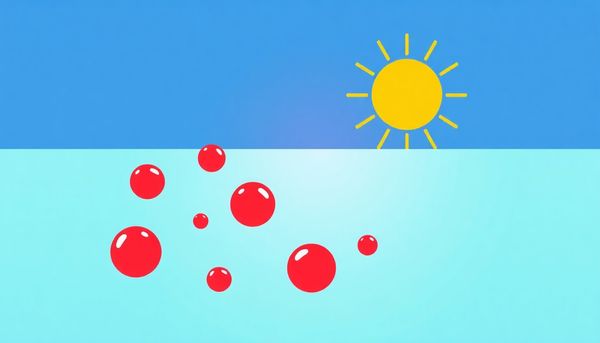
Understanding how to maintain pool sanitation can feel like unraveling a mystery novel. Each turn of the page reveals new information, and the clues lie in the types of chlorine you choose. Whether you opt for stabilized or unstabilized chlorine, keeping your pool clean hinges on maintaining the right balance.
Stabilized chlorine acts like sunscreen for your pool—it contains cyanuric acid, which shields the chlorine from the sun's relentless UV rays. This means less frequent dosing and potentially lower costs over time, as the chlorine remains effective longer. On sunny days, this choice can make pool maintenance feel like a breeze rather than a chore.
Conversely, unstabilized chlorine, devoid of cyanuric acid, serves as a quick-acting agent. It’s ideal for indoor pools or pools that require frequent shocking, as it disperses rapidly without the stabilizing element. However, for outdoor pools basking in sunlight, it requires vigilant monitoring and more frequent additions to ensure optimal sanitization.
A personal anecdote might shed some light: When managing an outdoor pool, I initially underestimated the power of the sun. I opted for unstabilized chlorine because I thought the immediate effectiveness was all that mattered. However, I soon found myself constantly testing and adjusting levels. Switching to stabilized chlorine allowed me to maintain cleaner water with less effort.
In the end, preserving pool sanitation isn't just about the type of chlorine—it’s about understanding the needs of your pool environment and choosing accordingly.
Selecting the right chlorine type for your pool is akin to picking the right gear for a trip—each option comes with its own benefits and challenges. Stabilized chlorine, armed with cyanuric acid, is like a trusty companion under the sun. It stands firm against UV rays, making it a top choice for outdoor pools that bask in direct sunlight. This means fewer trips to the store and less frequent doses, saving both time and money. However, like all good things, there's a balance to be struck. Excessive cyanuric acid can hinder chlorine's efficacy, akin to packing too much for a simple weekend getaway. Regular checks are essential to maintain optimal levels.
Unstabilized chlorine, on the other hand, is the free spirit of the pool world. Without the protective embrace of cyanuric acid, it is ideal for scenarios where sunlight isn't a concern—think indoor pools or quick sanitizing tasks. This form of chlorine is like a quick pit stop in the journey, requiring more frequent applications but offering unmatched flexibility. It's perfect for pool owners who prefer controlling every aspect of their pool maintenance or need regular shocking.
Ultimately, the choice hinges on understanding your pool's specific needs and your maintenance style. Whether choosing the resilience of stabilized chlorine or the adaptable nature of its unstabilized counterpart, the key is to keep your pool sparkling and inviting.
Choosing the right chlorine for your pool can feel a bit like picking between two seemingly similar puzzle pieces. Yet, the decision between stabilized and unstabilized chlorine holds considerable weight for maintaining a pristine swimming environment. Stabilizers, particularly cyanuric acid, work like a protective umbrella for your pool’s chlorine, shielding it from the harsh UV rays that can evaporate it too quickly. This means your chlorine lasts longer, saving you both time and money as you won’t need to replenish it as often.
Consider an outdoor pool during the height of summer. Without stabilization, the chlorine would dissipate almost as fast as you added it, leaving your pool vulnerable to bacteria and algae. Stabilized chlorine tablets, often enriched with cyanuric acid, become the hero in this story, ensuring consistent sanitation levels by keeping your chlorine intact for the long haul.
However, like any good tool, stabilization requires balance. Overdoing the cyanuric acid can reduce chlorine’s effectiveness, akin to wearing sunglasses indoors—unnecessary and a bit counterproductive. Keeping an eye on levels, ideally below 100 ppm, ensures you harness the full benefits without the drawbacks. Through this lens, stabilized chlorine emerges as an invaluable ally for pool owners, offering a harmonious blend of efficiency and efficacy, perfect for those who seek a bit of ease in their pool maintenance routine.
Keeping a swimming pool sparkling clean and safe is a meticulous task, akin to being the captain of a ship navigating through unpredictable waters. One of the essential responsibilities is regularly monitoring chlorine levels. Proper chlorine balance ensures your pool is a sanctuary of leisure rather than a breeding ground for harmful microbes.
Start by recognizing the difference in behavior between stabilized and unstabilized chlorine. Stabilized chlorine, with its trusty sidekick cyanuric acid, tends to linger longer, offering a buffer against the sun's harsh rays. Meanwhile, unstabilized chlorine, the more fleeting of the two, requires a vigilant eye to maintain the ideal concentration of 3 parts per million (ppm).
Relying solely on stabilized chlorine might seem appealing due to its longevity, but every choice in pool maintenance comes with caveats. Too much cyanuric acid can bind chlorine into ineffectiveness, like an overprotective guardian. Regular testing becomes your trusty routine, ensuring cyanuric acid levels hover below the 100 ppm threshold, allowing chlorine to perform its sanitizing duties effectively.
Remember, even on the cloudiest of days, UV rays are relentless, and so must be your dedication to testing. This vigilance not only extends the life of your pool chemicals but also keeps the waters clear and inviting. So, grab that testing kit and consider it an essential tool, like a compass guiding you to crystal-clear waters.
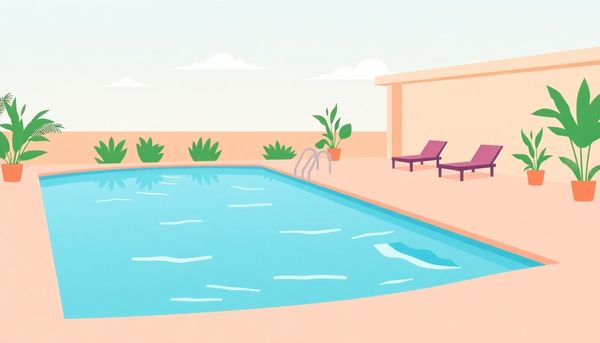
If you’ve ever marveled at the way chefs effortlessly whip up gourmet delights, you’ll appreciate the finesse required in mastering your pool-care routine. First, consider the unique characteristics of your aquatic haven. Is it an outdoor pool basking in the sun, or does it reside sheltered indoors? This seemingly simple observation guides your chlorine choice—stabilized for sunbathers, unstabilized for the sheltered.
On sunny days, stabilized chlorine takes the stage, armed with cyanuric acid to fend off UV rays, extending its lifespan and ensuring your pool remains inviting with less frequent dosing. Meanwhile, unstabilized chlorine is the unsung hero for indoor pools or for those times when your pool needs a shock to revitalize its clarity. Without the stabilizing companion, it delivers a potent punch, albeit one that demands regular attention to maintain the ideal 3 ppm level.
Balancing chlorine levels need not be a chore. Think of it as fine-tuning a musical instrument: over time, you’ll become adept at sensing when your pool needs a little more zest or a tranquil pause. Keeping a daily check on chlorine levels can prevent imbalances, saving both time and resources. And just like a chef knows their spices, you’ll know when to sprinkle in a bit of cyanuric acid to bolster unstabilized chlorine without overdoing it.
Remember, finding the rhythm in your pool-care routine transforms a task into a rewarding ritual, promising a crystal-clear retreat ready to welcome you at a moment’s notice.
Chlorine has long been the unsung hero of pool maintenance, yet its varieties can mystify even the most diligent pool owner. Stabilized and unstabilized chlorine, though they sound like minor variations of the same chemical, play distinct roles in pool care. Each type offers unique advantages that cater to different environmental conditions and maintenance needs.
Stabilized chlorine comes with a built-in bodyguard: cyanuric acid. This additive shields chlorine from the harsh rays of the sun, allowing it to linger longer and work more efficiently in outdoor pools. Imagine enjoying a leisurely week at the beach without worrying about constantly topping up your pool chemicals; that’s the benefit of using stabilized chlorine. However, there's a catch. Too much cyanuric acid can hobble the chlorine's effectiveness, akin to wearing sunglasses indoors. Regular monitoring and occasional water dilution become necessary to keep your pool chemistry balanced.
Unstabilized chlorine, on the other hand, steps into the spotlight in scenarios where sun exposure is less of a concern, such as indoor pools. It’s like a sprinter—fast-acting and potent, but quick to fade under the sun. For pool owners who frequently need to shock their water or manage specific sanitation routines, unstabilized chlorine offers flexibility without the potential cyanuric acid buildup. By understanding these characteristics, pool owners can make informed decisions, ensuring their aquatic havens remain pristine without unnecessary hassle or expense.
Standing at the pool supply aisle, new pool owners often find themselves baffled by the options. Stabilized versus unstabilized chlorine: a seemingly simple choice that holds significant implications for your pool’s maintenance. The key is in recognizing what each type brings to your pool management game.
Stabilized chlorine, enriched with cyanuric acid, serves as a steadfast guardian against the sun’s harsh UV rays. This means less frequent chlorine additions and a consistent sanitizing power, making it perfect for those basking under relentless sunlight. Imagine you’re planning a series of summer parties; stabilized chlorine can keep your pool sparkling with minimal fuss. However, be cautious. Over time, cyanuric acid can accumulate, potentially reducing chlorine’s effectiveness, akin to wearing sunglasses indoors—not ideal.
On the other end, unstabilized chlorine enters the scene, sans the stabilizing agent, making it a prime choice for indoor pools or those requiring frequent shocking. Its quick dissipating nature ensures that any excess doesn’t linger, offering flexibility for pool owners who need rapid adjustments. An example from experience: a friend’s indoor spa benefits greatly from unstabilized chlorine, allowing for precise control over chlorination levels without the drag of stabilizer buildup.
Ultimately, the decision pivots on your pool's environment and your maintenance preferences. Weigh the pros and cons, and select the chlorine type that aligns with your lifestyle and pool needs. This thoughtful choice can transform pool care from a chore into a simple, hassle-free routine.
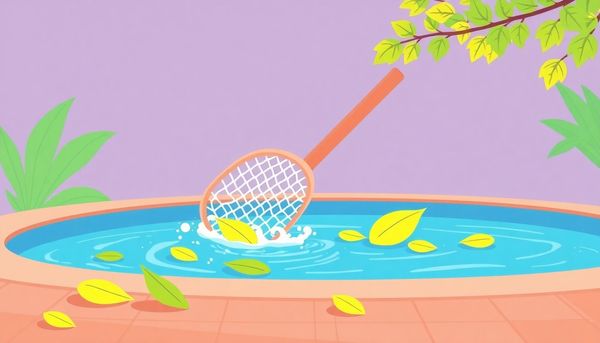
This article provided insights into maintaining your pool. Start your pool care journey today!
Want to become a pool maintenance expert? Our free Pool School course covers everything you need to know about pool care. From basic maintenance to advanced troubleshooting, you'll learn how to:
Join over 10,000 pool owners who have already transformed their pool care routine. Get started with our free Pool School course today!